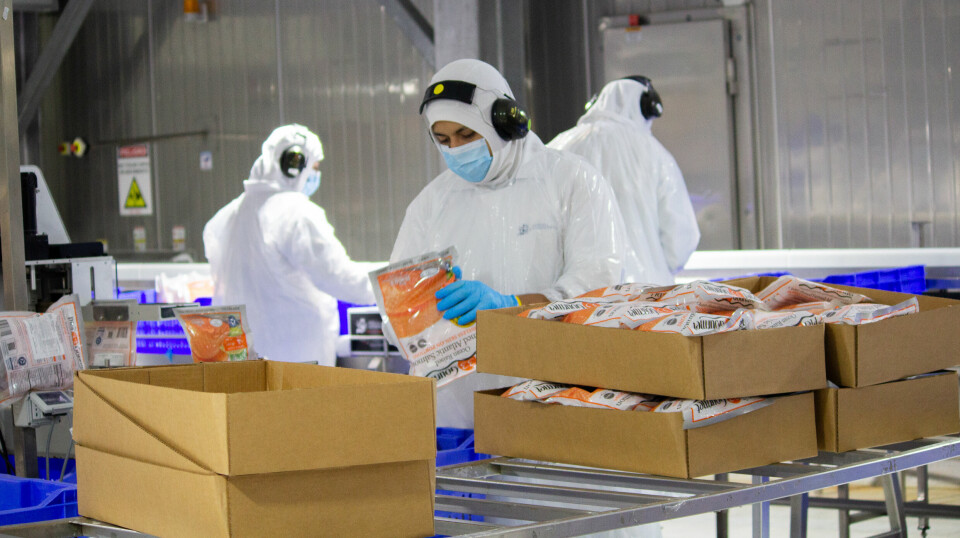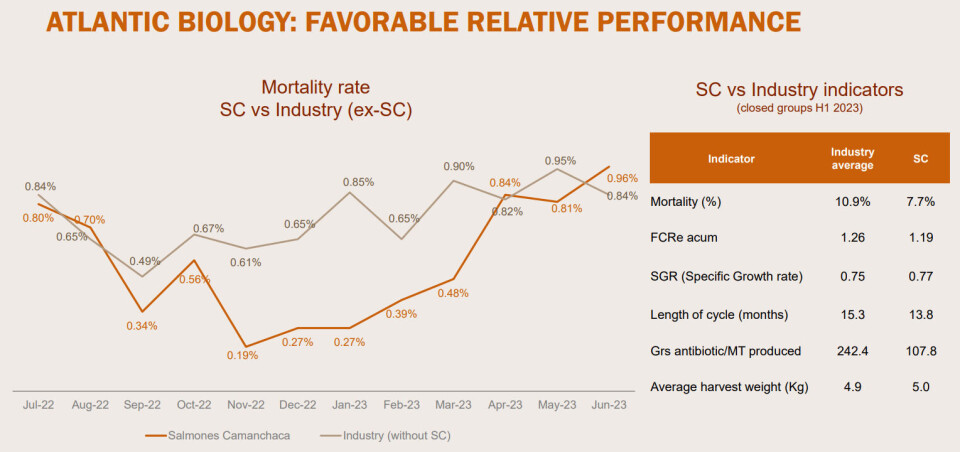
Camanchaca made small operating loss in Q2
Result is partly due to effects of risk reduction strategy, says Chilean salmon farmer
Chilean fish farmer Salmones Camanchaca made negative EBIT of US -$0.3 million in the second quarter of 2023 due to a scheduled reduction in harvest volume and higher costs.
In the same quarter last year, Camanchaca made EBIT - a measure of operating profit - of $21.2m.
One-off costs in Q2 2023 included a scheduled five-week shutdown of the company’s value-added processing plant in Tomé for major maintenance and planned improvements.
48% lower Atlantic harvest
Camanchaca harvested 6,423 tonnes (whole fish equivalent) of Atlantic salmon in the quarter, which was 48% less than in Q2 2022 (12,446 tonnes). The reduction is part of the company’s risk mitigation strategy to move Atlantic salmon production further south and grow more coho salmon, which are resistant to lice.
The cost of harvested Atlantic salmon (ex-cage live weight) increased 23% to $4.98/kg, influenced by higher costs related to SRS (salmon rickettsial septicaemia) outbreaks and sea lice presence, in addition to sea lion attacks. High price levels for salmon feed ingredients in late 2022 and early 2023 also affected costs.

On the plus side, the biological conversion ratio for Camanchaca’s Atlantic salmon continues to improve and reached 1.08 in the 12 months to the report. The FIFO (fish in, fish out) indicator was lower than its long-term target and lower than the targets set by the company’s Sustainability Linked Loan.
Smolt productivity, measured as biomass harvested/number of smolts stocked, improved to 4.6 kg WFE/smolt in 2023, which was 28% higher than in 2022 and 5% higher than in 2021.
Average closed-cycle harvest weight was 5.1kg WFE, which was 16% higher than in 2022, but 5% lower than the previous cycle in 2021.
Total Q2 sales volume of coho salmon was 1,254 tonnes, up 148% from Q2 2002. Total volume for the 2022-2023 season was 5,856 tonnes, more than double from the previous season. Smolt stocking to date is expected to double harvest volumes for the 2023-2024 season.

Camanchaca vice chairman Ricardo García said: “The results obtained in the second quarter are clearly weak, but they are partially a reflection of strategic decisions taken to reduce environmental risks in the X region (Los Lagos) fjords, increasing smolt stocking further south, and improvements and maintenance in the processing plant that was closed for half of the quarter. All this led to an extraordinary and non-recurring decrease in the volume harvested, processed, and sold.
“For the second half of the year, we expect to harvest more than two thirds of the annual volume, which we estimate will be slightly higher in a range of 56,000 to 60,000 tonnes with close to 80% being Atlantic salmon.
“In the first half of the year, we have an underlying pressure of higher costs due to risk mitigation strategies, which is added to inflationary pressures on input materials, to which is added in a particular way this quarter, the lower volumes harvested and processed, and two specific health situations that we trust will not be repeated in the rest of the year. And on the price side, we had somewhat better prices than the previous year, and we see that the low situation at the end of the second quarter has been recovered.”





















































